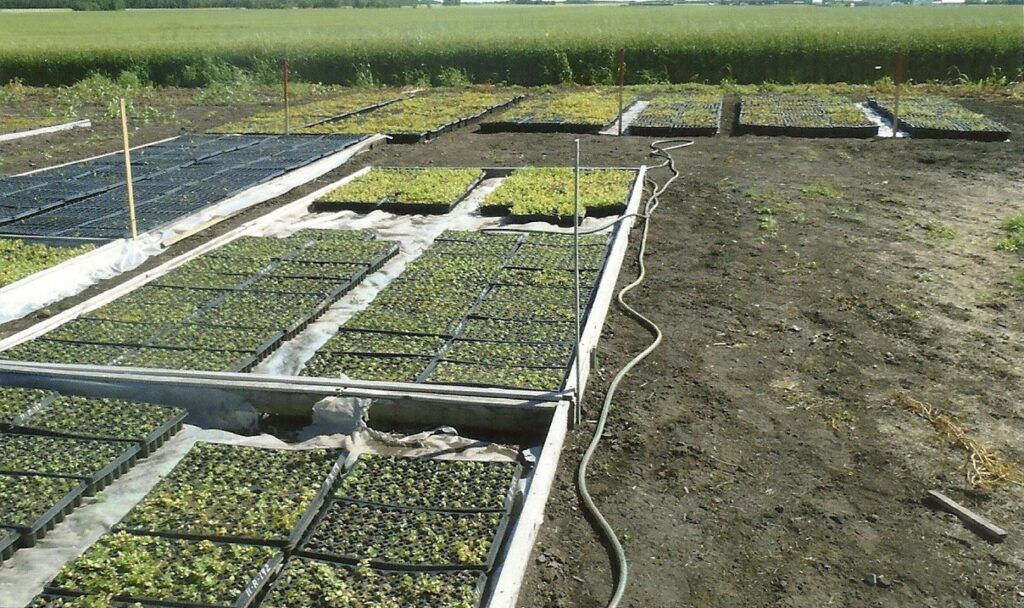
It’s early March, and spring is still about 6 weeks away for farmers here in Alberta Canada. We need to hit the ground running when the growing season starts. While the snow covers all the jobs that had to be left when fall turned to winter, it’s a great time to plan for the months to come.
Meanwhile as the farmers plan, the Rhodiola has been seeded into trays and waits for the snows to melt. By mid-April the trays start to show green specks, but which ones are the Rhodiola rosea? Small and bluish-green, two cotyledons appear (primary leaves before the first true leaves). They are round and smooth and plump with a linear crevice in between. The white balls in the picture are perlite, which is found in many types of potting mixtures.
Experience says that the Rhodiola germinates early, but the plant is small and vulnerable. If conditions are right, the tiny seedling will continue to grow, putting out one or two green shoots. Simultaneously the seedling starts developing a small ball where the shoot meets the soil. This is the crown where new buds will develop and energy is stored before winter comes.
The farmer tends his seedlings 6 months to 2 years before they are ready to transplant to the field. The bigger the seedling at transplant time, the better the chance of survival.
Will greenhouse practices or hydroponics improve the chances of survival? Will these practices produce a larger more robust seedling in a shorter amount of time? Research is underway in Alaska and in Canada and in time we will know and probably have even more questions!



